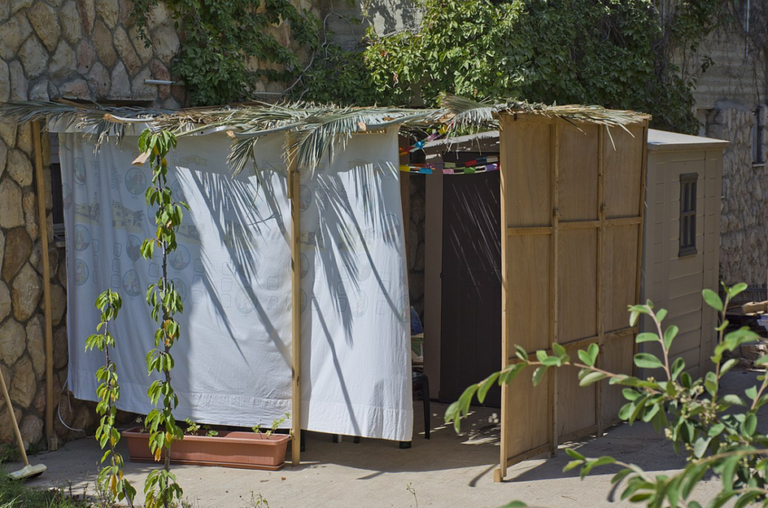Akin to the 'Keep Calm and Carry On' campaign of Londoners during the Blitz.

Bnei Brak, October 22 - Millions of people all over the Jewish State have taken their meals in outside, thin-roofed structures since last Wednesday night, with many also electing to sleep in the makeshift spaces, as well, in a move that many analysts interpret as a defiant gesture in the face of missile attacks from Iranian proxy terrorist groups in Gaza, Lebanon, Syrian, Yemen, and Iraq.
Beginning at sundown on October 16, observers report, Israelis in large numbers moved their "dining room" functions out of their regular homes and into huts made of various materials, but even the huts with solid walls have a roof made of palm branches, reeds, or sticks. For the last six nights, many of the outdoor-dining set have spent their nights and most of their other daytime hours in the huts - despite, or perhaps because of, the threat from rockets and drones.
"It certainly looks like a collective decision to stick a thumb in the Ayatollah's eye," explained defense analyst Tabber Nackles of Sky News. "For most of the last year, and on various occasions over the last couple of decades, Israelis, as a rule, have tried to remain within spitting distance of bomb shelters of some sort, whether in their own buildings or in a public shelter in the neighborhood. But in my assessment, the constant rockets since last October 7, first from Hamas, then also from Hezbollah, and now mostly from Hezbollah, have brought out a defiance and, one might even think, a fatalism, akin to the 'Keep Calm and Carry On' campaign of Londoners during the Blitz. By living in the huts, Israelis are saying to Hezbollah, 'You don't scare us.'"
Observers found other recent shifts in Israeli behavior that indicate resilience and defiance as the proxy war against Iran enters its second year: thousands of Israelis have carried and waved collections of leaves and a citron each day since last Thursday, excluding Saturday, in what some experts believe carries symbolism.
"I would venture that the unopened palm branch is about poking Iran in the eye," suggested social anthropologist Anne Lee-Musagh. "The myrtle branches, as I understand, refer to the Biblical heroine Esther, whose other named, Hadassah, means myrtle, and she was instrumental in neutralizing a Persian threat to the Jews. The citron is yellow or greenish-yellow, which I think is important because yellow is a color we associate with cowardice, and Israelis are calling their enemies cowards for hiding behind human shields and humanitarian organizations. And the willow bush sprigs are impossible to keep fresh, so that looks like they're predicting the regime in Teheran will wither in no time."
Please support our work through Patreon.
Buy In The Biblical Sense: https://www.amazon.com/dp/B0B92QYWSL